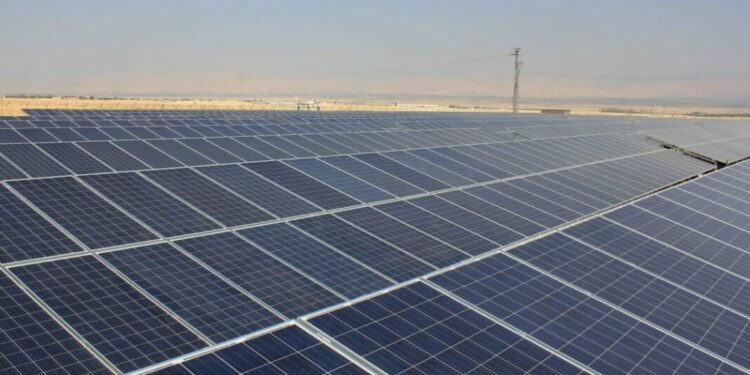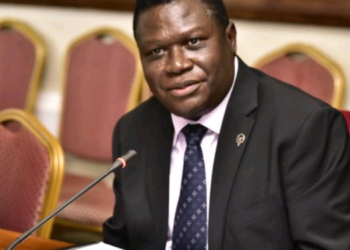The West Nile sub-region of Uganda is on the brink of a significant transformation, as up to 192,640 households stand to gain access to reliable electricity.
This development is spearheaded by a groundbreaking solar power project, underscoring Uganda’s commitment to clean energy and its broader ambition of achieving universal access to electricity.
The catalyst for this change is the establishment of a 24 MWp Solar Photovoltaic (PV) plant in Madi Okollo district. Implemented by Ituka West Nile Uganda Limited, a subsidiary of the Dubai-based renewable energy operator AMEA Power, the project marks a substantial investment in the region’s energy infrastructure.
This solar plant is expected to generate approximately 53,940 megawatt hours (MWh) of clean energy annually, a significant contribution that will also help offset 26,600 tonnes of carbon emissions each year.
This ambitious project is anchored by a Power Purchase Agreement (PPA) signed in September 2023 between the Uganda Electricity Transmission Company Ltd (UETCL) and the Ministry of Energy and Mineral Development.
The UETCL, a key player in Uganda’s energy sector, is responsible for the bulk purchase and transmission of electricity across the country. The solar plant will be situated on a 52-hectare site in Ombachi village, Uleppi Sub County, and will include a medium voltage 33/132 kV transformer switchyard.
The electricity generated by the Ituka Solar Power Plant will be transmitted through the newly constructed Lira-Gulu-Nebbi-Arua 132 kV transmission line, a critical infrastructure piece operated by UETCL. This line will ensure that the clean energy produced reaches its intended beneficiaries across the West Nile region.
The project has not only economic and environmental implications but also significant local community involvement. According to Cosmas Omua, the LCI Chairperson of Ombachi village, 19 landlords contributed their land to the project and were duly compensated.
The company also managed the sensitive task of relocating 53 graves from the project site, ensuring that the land is now free from any encumbrances.
Alignment with National Goals and Environmental Commitments
The Ituka Solar Power Plant is more than just an energy project; it is a crucial part of Uganda’s broader vision for a sustainable future. Hussain Al Nowais, Chairman of AMEA Power, emphasized that the project aligns with Uganda’s aspirations for a cleaner and more sustainable energy landscape.
This sentiment was echoed by Dr. Ruth Nankabirwa, Uganda’s Minister of Energy and Mineral Development, who noted that the solar plant is the second largest in the country, following the Kabulasoke Plant in Gomba District.
The Ituka project is particularly important in light of Uganda’s Nationally Determined Contribution (NDC) goal, which aims to reduce carbon emissions by 24.7% by 2030.
The Ituka Solar Power Plant is set to complement the ongoing Electricity Access Scale Up Project (EASP) in the West Nile region. This five-year initiative, funded by the World Bank with a staggering USD 638 million (approximately 2.355 trillion Shillings), is designed to significantly increase electricity access across Uganda.
EASP aims to provide 1,073,500 new on-grid electricity connections, 150,000 off-grid connections, and implement 300,000 clean cooking energy solutions for households and commercial enterprises. Additionally, the project includes the solar electrification of 750 public institutions and the development of 50 rural water schemes.
The Ituka Solar Power Plant represents a USD 19 million (approximately 70.144 billion Shillings) investment. The financing for this project was secured during COP28 from the Emerging Africa Infrastructure Fund (EAIF), a testament to the global commitment to supporting sustainable energy projects in developing countries. COP28, held in Dubai, UAE, was the 28th annual United Nations climate meeting where future climate change preparations were a key focus.
This project also signals a historic moment for West Nile, as President Yoweri Kaguta Museveni recently commissioned the connection of the region to the national grid at Nebbi Station. This connection addresses the long-standing issue of unreliable electricity supply in the region, which has persisted since Uganda’s independence in 1962. Currently, access to electricity in Uganda stands at 57%, with off-grid solar PV systems contributing 38%.
The scale of unmet electricity demand in Uganda remains vast, with an estimated 5 to 7 million households still awaiting connection. This represents a market potential of approximately USD 3 billion.
The Ituka Solar Power Plant is more than just a power project; it is a beacon of Uganda’s energy future. By addressing both local and national energy needs while contributing to global environmental goals, the project underscores the importance of sustainable development.
Do you have a story in your community or an opinion to share with us: Email us at editorial@watchdoguganda.com













